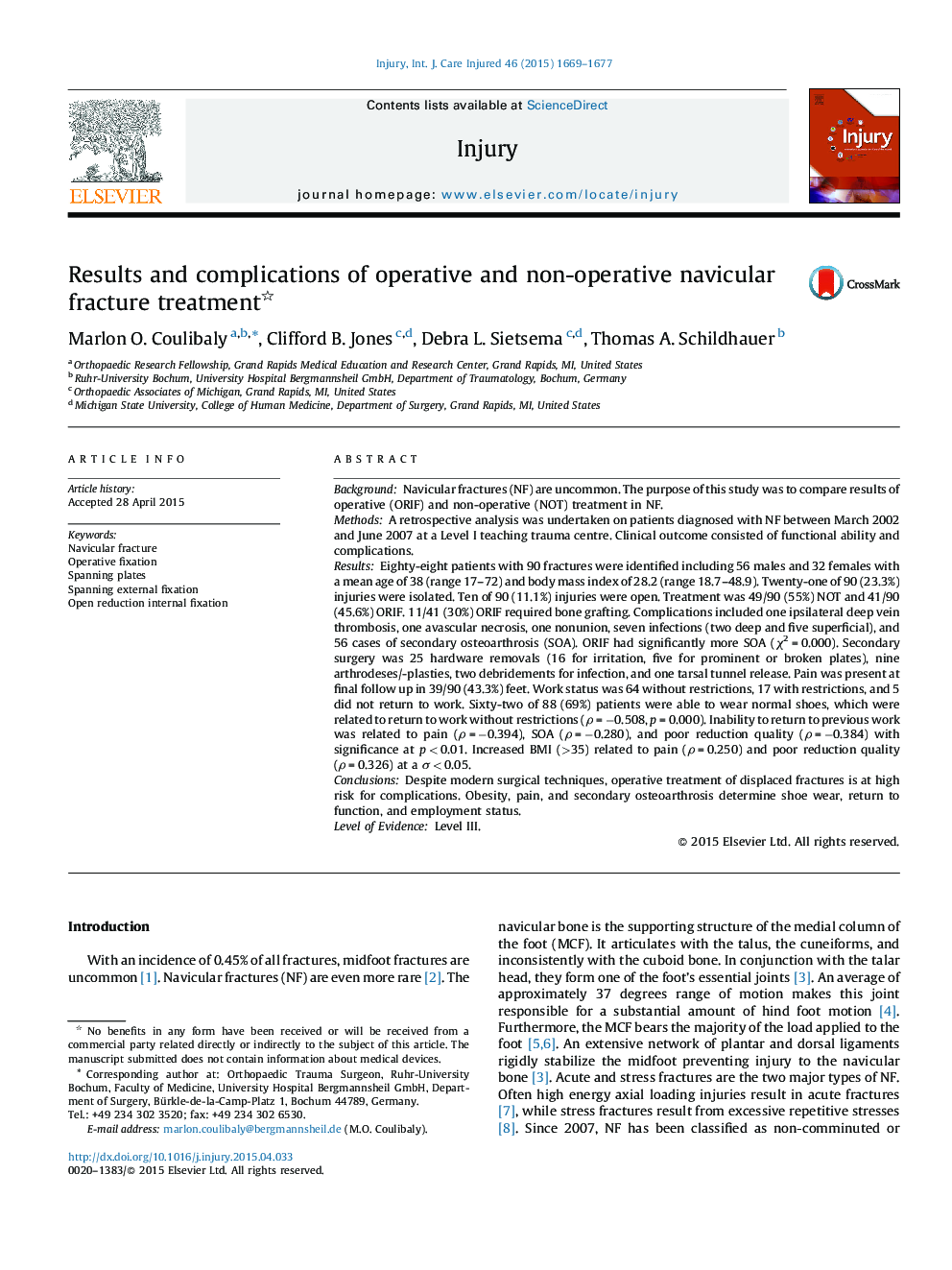| کد مقاله | کد نشریه | سال انتشار | مقاله انگلیسی | نسخه تمام متن |
|---|---|---|---|---|
| 3238918 | 1205976 | 2015 | 9 صفحه PDF | دانلود رایگان |

BackgroundNavicular fractures (NF) are uncommon. The purpose of this study was to compare results of operative (ORIF) and non-operative (NOT) treatment in NF.MethodsA retrospective analysis was undertaken on patients diagnosed with NF between March 2002 and June 2007 at a Level I teaching trauma centre. Clinical outcome consisted of functional ability and complications.ResultsEighty-eight patients with 90 fractures were identified including 56 males and 32 females with a mean age of 38 (range 17–72) and body mass index of 28.2 (range 18.7–48.9). Twenty-one of 90 (23.3%) injuries were isolated. Ten of 90 (11.1%) injuries were open. Treatment was 49/90 (55%) NOT and 41/90 (45.6%) ORIF. 11/41 (30%) ORIF required bone grafting. Complications included one ipsilateral deep vein thrombosis, one avascular necrosis, one nonunion, seven infections (two deep and five superficial), and 56 cases of secondary osteoarthrosis (SOA). ORIF had significantly more SOA (χ2 = 0.000). Secondary surgery was 25 hardware removals (16 for irritation, five for prominent or broken plates), nine arthrodeses/-plasties, two debridements for infection, and one tarsal tunnel release. Pain was present at final follow up in 39/90 (43.3%) feet. Work status was 64 without restrictions, 17 with restrictions, and 5 did not return to work. Sixty-two of 88 (69%) patients were able to wear normal shoes, which were related to return to work without restrictions (ρ = −0.508, p = 0.000). Inability to return to previous work was related to pain (ρ = −0.394), SOA (ρ = −0.280), and poor reduction quality (ρ = −0.384) with significance at p < 0.01. Increased BMI (>35) related to pain (ρ = 0.250) and poor reduction quality (ρ = 0.326) at a σ < 0.05.ConclusionsDespite modern surgical techniques, operative treatment of displaced fractures is at high risk for complications. Obesity, pain, and secondary osteoarthrosis determine shoe wear, return to function, and employment status.Level of EvidenceLevel III.
Journal: Injury - Volume 46, Issue 8, August 2015, Pages 1669–1677